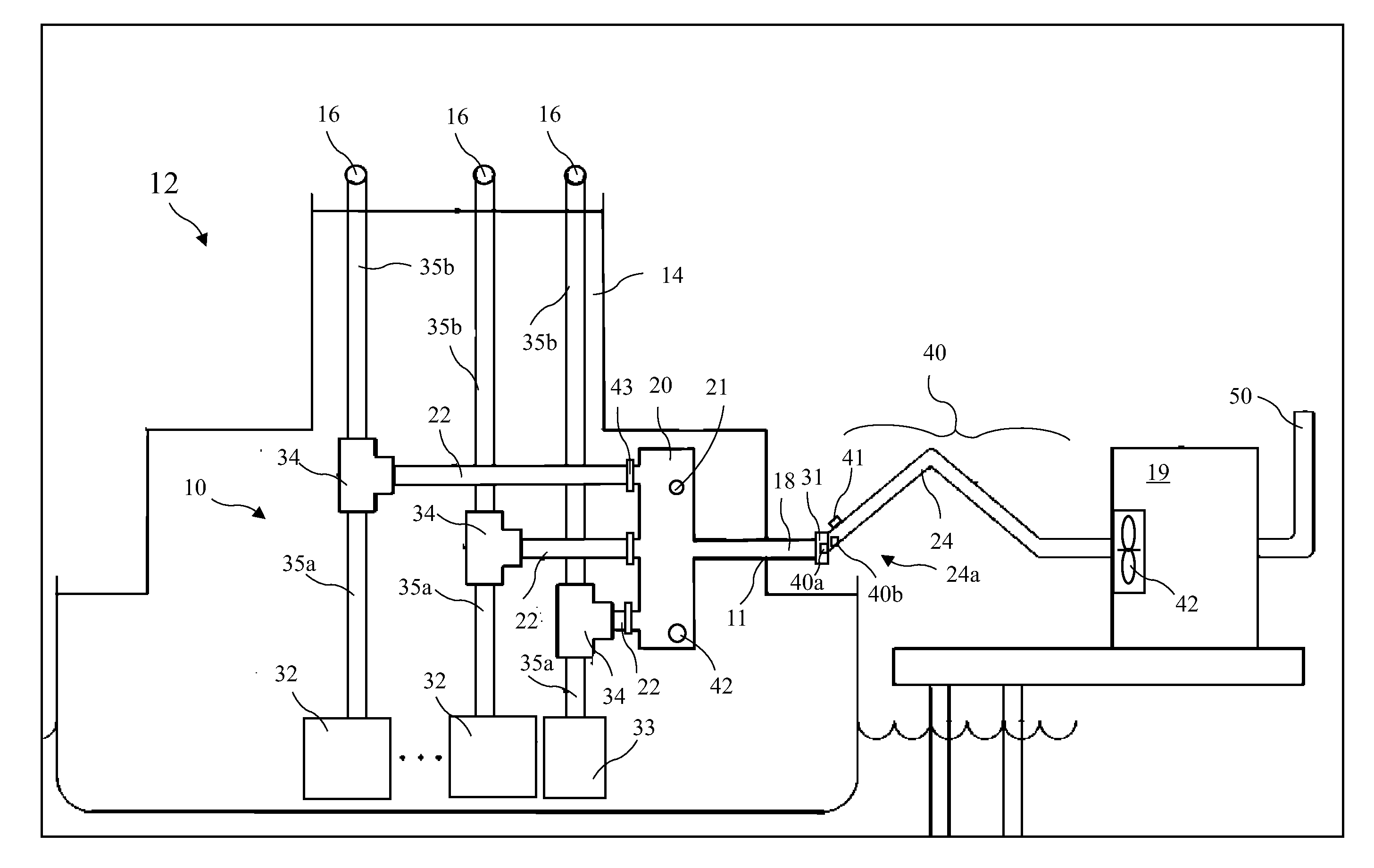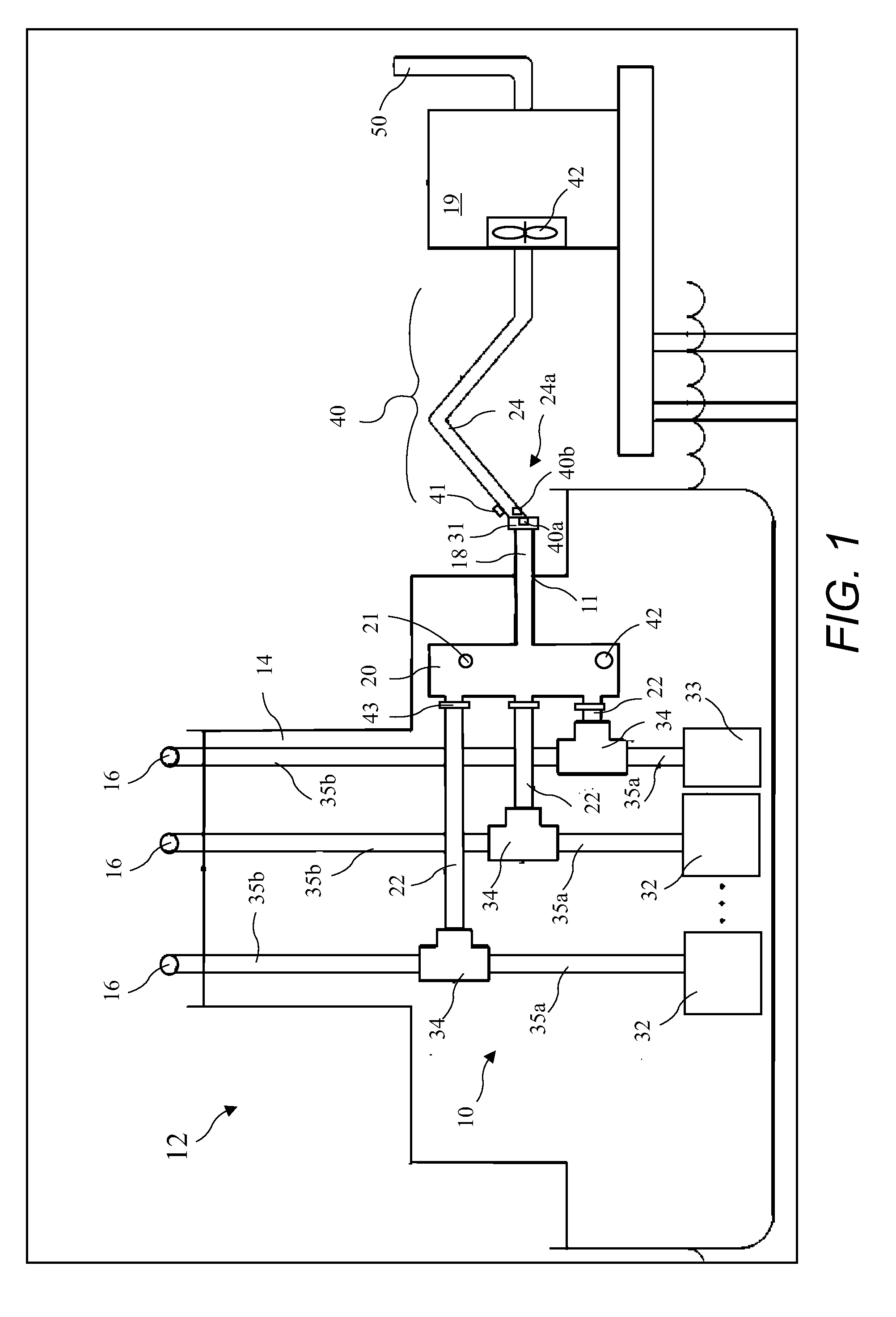Exhaust Gas Diverter and Collection System For Ocean Going Vessels
- Summary
- Abstract
- Description
- Claims
- Application Information
AI Technical Summary
Benefits of technology
Problems solved by technology
Method used
Image
Examples
Embodiment Construction
[0025]The following description is of the best mode presently contemplated for carrying out the invention. This description is not to be taken in a limiting sense, but is made merely for the purpose of describing one or more preferred embodiments of the invention. The scope of the invention should be determined with reference to the claims.
[0026]In the following detailed description, the term stack refers to the large structure protruding from the upper part of an Ocean Going Vessel (OGV) and from which exhaust gas may be observed to exit the OGV. An alternative term for stack, used by some in the marine field, is funnel. The stack contains or encompasses several individual OGV exhaust pipes. Each of the OGV exhaust pipes connects to one source of exhaust gas such as one auxiliary engine or one auxiliary boiler or an onboard incinerator. The terms vessel and OGV mean one and the same, namely an OGV used to transport cargo or people, and the terms are used interchangeably in the mari...
PUM
| Property | Measurement | Unit |
|---|---|---|
| Pressure | aaaaa | aaaaa |
| Flow rate | aaaaa | aaaaa |
| Flexibility | aaaaa | aaaaa |
Abstract
Description
Claims
Application Information
 Login to View More
Login to View More - R&D
- Intellectual Property
- Life Sciences
- Materials
- Tech Scout
- Unparalleled Data Quality
- Higher Quality Content
- 60% Fewer Hallucinations
Browse by: Latest US Patents, China's latest patents, Technical Efficacy Thesaurus, Application Domain, Technology Topic, Popular Technical Reports.
© 2025 PatSnap. All rights reserved.Legal|Privacy policy|Modern Slavery Act Transparency Statement|Sitemap|About US| Contact US: help@patsnap.com



